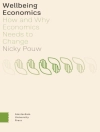This practical, hands-on guide helps beginning researchers create a mixed methods research proposal for their dissertations, grants, or general research studies. The book intertwines descriptions of the components of a research proposal (introduction, literature review, research methods, etc.) with discussions of the essential elements and steps of mixed methods research. Examples from a real-world, interdisciplinary, mixed methods research study demonstrate concepts in action throughout the book, and an entire sample proposal appears at the end of the book, giving readers insight into every step up to completion. Readers who complete the exercises in each chapter will have an individualized, detailed template for their own mixed methods research proposal.
Developing a Mixed Methods Proposal is Volume 5 in the SAGE
Mixed Methods Research Series.
Зміст
Chapter 1. Why a Guide for Developing Mixed Methods Proposals?
What is Mixed Methods research?
What are the Advantages of Mixed Methods Research?
What should you consider when engaging in mixed methods research?
What does a Mixed Methods Research Proposal Look Like?
Practice Session
Chapter 2. The Role of Theory in Mixed Methods Research
What role does theory play in a mixed methods research proposal?
Practice Session
Chapter 3. Asking Appropriate Research Questions
The Role of Research Questions
Types of Research Questions
Creating Your Own Research Questions
Practice Session
Chapter 4. The Mixed Methods Proposal Introduction
Purpose of the Mixed Methods Proposal Introduction
Components of the Mixed Methods Proposal Introduction
Practice Session
Chapter 5. The Literature Review: Situating Your Mixed Methods Study in the Larger Context
The Role of the Literature Review
Preparing and Organizing Your Research Literature
The Components of the Literature Review
Writing the Literature Review
Conclusion
Practice Session
Chapter 6. Mixed Methods Designs: Frameworks for Organizing Your Research Methods
Learning the Language of Mixed Methods Designs
Understanding Mixed Methods Designs
Choosing a Mixed Methods Design
Visually Representing your Mixed Methods Design
Conclusion
Practice Session
Chapter 7. The Heart of the Mixed Methods Research Plan: Discussing Your Methods Section
The Role of the Research Methods Section
The Components of the Mixed Methods Research Section
Conclusion
Practice Session
Chapter 8. A Little Lagniappe…A Little Something Extra
The Supporting Sections of the Mixed Methods Proposal
Writing and Talking About Your Mixed Methods Proposal
Issues Beyond Writing the Mixed Methods Research Proposal
Conclusion
Practice Session
Chapter 9. An Example of a Real-World Mixed Methods Research: The Racial Microaggressions Study Proposal
Explanatory Mixed Methods Example
Про автора
Paul A. Schutz, Ph D is currently a Professor in the Department of Educational Psychology at the University of Texas at San Antonio. His research interests include the nature of emotion, the influence of emotional experiences on teachers’ identity development, research methods and issues related to race and social justice. He has several publications related to the use of mixed methods and has taught a variety of different research methods course, including qualitative, quantitative and mixed methods research courses. He is a past president for Division 15: Educational Psychology of the American Psychological Association and a former co-editor of the Educational Researcher: Research News and Comment, a lead journal for the American Educational Research Association.












